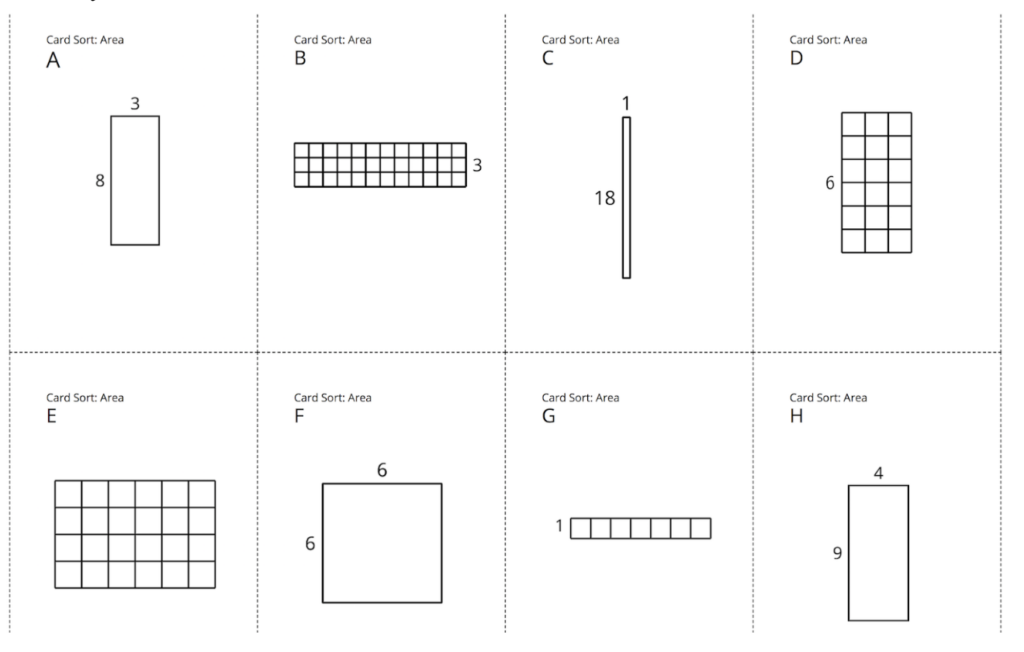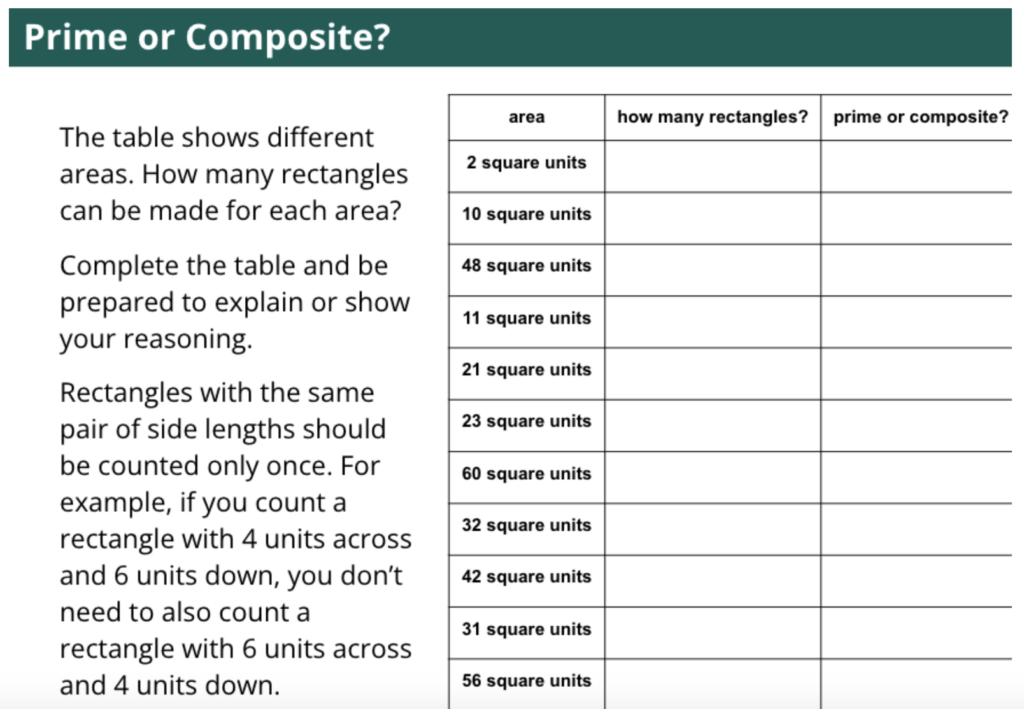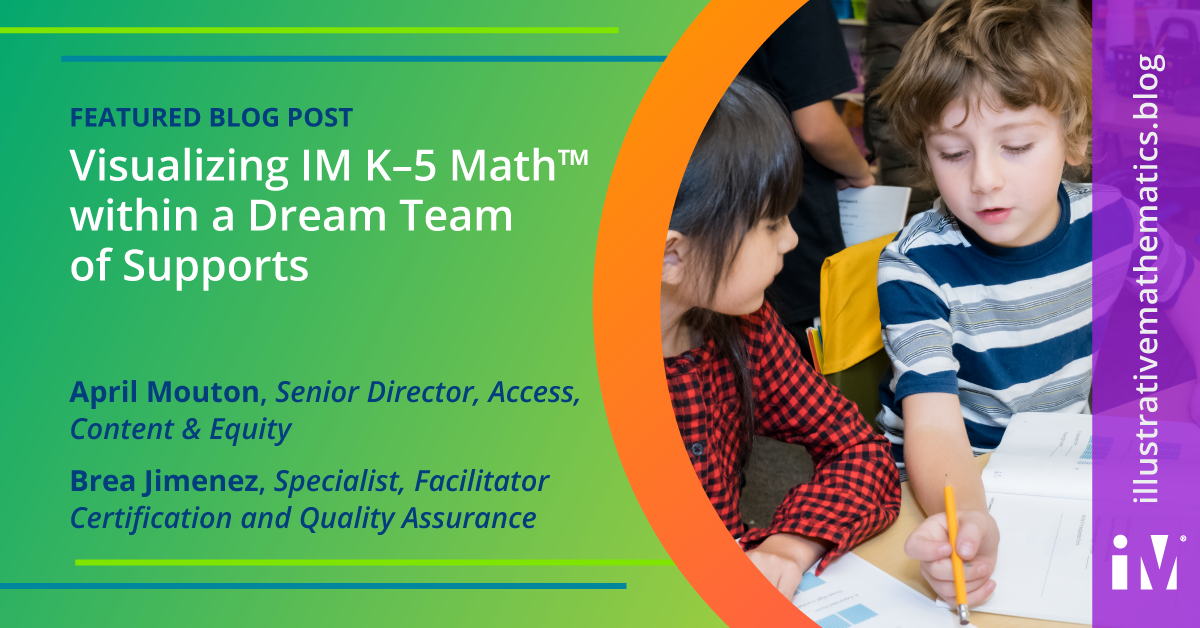By April Mouton, Senior Director, Access, Content & Equity and
Brea Jimenez, Specialist, Facilitator Certification and Quality Assurance
The Gradual Release of Responsibility approach to learning mathematics—I do, we do, you do—centers the educator as the holder of information and knowledge. It creates a landscape of students waiting on the educator to model, and waiting to receive information. This approach can disrupt sense-making by providing too much guidance before allowing space for students to explore mathematical ideas independently.
IM’s problem-based, forward-learning approach centers all members of the learning environment as leaders in sharing knowledge and mathematical approaches, and offers communal ways of knowing and doing. This asset-based learning environment acknowledges that all members of the math experience can contribute to the mathematical journey, including students with learning differences. As a facilitator of learning, educators must be thoughtful, intentional, and strategic in anticipating the necessary supports needed for students with disabilities in order to showcase their brilliance and mathematical connections.
IM K–12 is a Tier I instructional curriculum. When educators are intentional about creating learning environments for all of their students to be seen, experience joy, and engage in entry points that increase their ability to access the content and thrive, learners experience an authentic environment. By incorporating the principles of Universal Design for Learning (UDL), the IM curriculum positions itself as an integral member of a dream team of supports for all students, especially students with disabilities, to engage in an inclusive learning environment.
How IM Incorporates the Principles of Universal Design for Learning:
- Multiple means of engagement, representation, and action and expression are built into the curriculum’s problem-based design.
- Educators and learners experience invitations in warm-ups and activity launches, with a strategic sequence of representations throughout the curriculum, and activities that offer students multiple ways to communicate their thinking (small group, whole group, verbally, with written words, with representations, etc.).
- Notes on access for students with disabilities throughout the curriculum suggest additional ways to provide multiple means of access related to specific barriers students may face accessing a particular activity, e.g. allowing students an aid to working memory or a sentence frame for getting started on a conversational task.
- Access to visual information in the curriculum is enhanced with image descriptions, avoiding the use of color to provide meaning, and other visual accessibility tools.
IM’s problem-based curriculum has an intentional lesson design focused on independent, group, and whole-class instruction. A typical lesson has four phases:
- a warm-up
- one or more instructional activities
- the lesson synthesis
- a cool down or “Look-fors”
At each of these phases, there are opportunities for educators to facilitate entry points designed to maximize access for all students. The curriculum’s built-in suggested supports can guide an educator’s professional decision to change the pace of the content presentation, modify the setting from independent to small-group instruction, include language representation supports, and more. When considering the use of IM’s curriculum to support the journey of knowing, using, and enjoying math for students with disabilities, educators should consider the following three environments: Tier 1 Instruction, Tier 2 Core instruction with integrated accommodations, and a Self-Contained Core Instruction learning environment.
Using IM K-5 Math (Grade 4, Unit 1, Lesson 3: Prime and Composite Numbers), we will model how the IM curriculum plays a pivotal role in supporting educators in meeting and exceeding the academic math needs of their students.
Environment 1 (Tier 1 Instruction) Resource Student with Push-in Paraprofessional Support
Educators in the IM classroom are equipped with a curriculum that invites students into the learning, provides opportunities for students to express their thinking in multiple ways, and offers many entry points into the learning process. The UDL Tier 1 IM curricular design offers the opportunity for students with resource supports (i.e. push-in paraprofessional support) to engage with a lesson starting with quiet think time, then working in small groups, and eventually participating with the whole class. Additionally, they encounter multiple verbal and visual processing opportunities before they begin to synthesize their learning.
The warm-up launch in Lesson 3: Prime and Composite Numbers utilizes the instructional routine Choral Count, of 2s and 5s, which focuses on pattern recognition.

Activity 1 presents the opportunity to hear students’ multiple ways of understanding when students have an opportunity to sort a set of cards into categories that make sense to them, and then to deepen their understanding by creating another rectangle to add to their categories within the sort.
Activity 1: Card Sort Area

Additionally, students benefit from the use of a partner to process their thinking in a small-group setting, as well as the opportunity to relate concrete visualization of the areas of a rectangle to a more abstract concept of prime and composite numeracy.
Activity 2: Prime or Composite?
In this activity, students work with a partner to determine the number of rectangles that can be made for different areas. Students are encouraged to use inch tiles, grid paper, or freehand drawing to model the potential rectangles that meet the given area constraints. The opportunity to engage in multiple representation strategies empowers students to synthesize their learning.

Additional Learning Environments
The Individuals with Disabilities Education Act (IDEA) defines special education placement as one of the following: instruction in regular classes, special classes, special schools, home instruction, and instruction in hospitals and institutions (Individuals with Disabilities Education Act, 2004). For clarity in this section, “special classes” will be divided into two categories: self-contained and partial inclusion.
Environment 2 (Tier 2 Core instruction with integrated accommodations): While there are many factors that go into placement decisions, students in partial-inclusion classrooms typically have mild to moderate disabilities that require specialized academic supports, small group or 1-to-1 interventions, and general classroom accommodations. Students in inclusion environments can typically attend to whole- and small-group instruction with some support through classroom or individual accommodations. Partial inclusion classrooms typically have students spending some of their school day in general-education classrooms with more intensive special education services provided to them in a separate classroom. This description is not reflective of every state and district and is only intended to provide more insight into the scope of the recommendations for utilizing IM K–12 Math for students in these and similar types of learning environments.
Environment 3 (Self-Contained Core Instruction learning environment): Students in self-contained classrooms typically have moderate to severe disabilities that require intensive, specialized academic supports in 1-to-1 settings. Students in self-contained classrooms typically cannot attend to whole-group instruction without significant prompting and support and specialized classroom staff. When it comes to best practices for this population of students, we recognize that explicit direct instruction is an integral strategy. When examining the impact of instruction on achievement for learners with disabilities, a comprehensive approach utilizing inquiry or problem-based learning has shown great success in special populations (Rizzo and Taylor, 2016; Lambert, 2020; Lambert et. al., 2020). Ultimately, it is up to the individualized needs of a student, input from primary stakeholders, and site and district leadership to decide on best practices for an individual student or classroom.
The intentionality in incorporating a UDL mindset to IM’s core curriculum positions the curricula to be a strong and viable, high-quality first instruction choice. For specific concepts, some students may need additional accommodations or curricular modifications to increase access to the learning environment.
Excited to see IM modeled in an Environment 2 or 3 setting? In future blog posts, we will revisit this lesson for environments 2 and 3!
Call to Action/Reflection Questions:
- Consider how you prepare your learning environment for the diverse needs, ideas, and experiences of the students who enter the classroom.
- How do you make opportunities to engage in quiet self-thought, to share personal experiences, and to share multiple representations, a shift from an instructional practice to an instructional routine?
- What does inclusion look like, sound like, and feel like in your mathematics learning environment?
 April Mouton
April Mouton
Senior Director, Access, Content & Equity
April J. Mouton (she/her/sis) received a BA in political science and minors in mathematics and African studies from the University of California, Davis. She received her MEd in counseling education, K-8, administrative, and pupil personnel credentials from San José State University. She has served as a mathematics and cultural studies teacher, administrator, and consultant for 22 years. April is currently the senior director of access, content, and equity at IM and a doctoral candidate at Texas State, with a focus on demystifying mental health, culturally responsive teaching, identity formation curriculum integration, leveraging ancestral knowledge, and equity forward systems. She is the mother of three dynamic children, and her husband is a writer and educator.
 Brea Jimenez
Brea Jimenez
Specialist, Facilitator Certification and Quality Assurance
Brea J. Jimenez (she/her/hers) received a BA in English from Ottawa University in Ottawa, Kansas. She received an MA in Special Education from the California State University of Bakersfield. She is dual-certified in K–12 moderate to severe special education (exceptional children) and early childhood special education. She holds authorizations for English learners and autism populations. She has spent her classroom and administrative career working with Pre-K to 22-year-old students with exceptionalities in a wide variety of inclusion, self-contained, and transition settings. Brea is currently the facilitator certification and quality assurance specialist at IM. She has a passion for universally accessible classroom design and empowering all learners to have agency over their educational experiences. She is a zealous knitter, the mother of two children and two cats, and proud partner to a US Navy Veteran.
